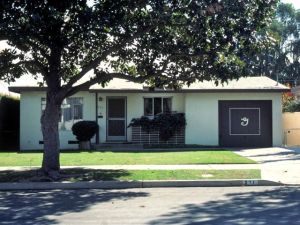
I grew up at a time when the suburbs ruled and cities were burning. So naturally I could not be more thrilled at the vitality I find in cities. It is actually possible nowadays to say that New York City is a pleasurable place to live, not just that its advantages make its horrors tolerable.
I lived through several decades in which the guiding presumption by anyone that mattered was that big, old cities were dinosaurs, doomed to the dustheap of history. So naturally I find myself skeptical of the punditocracy that’s decided that the triumphing of the city must now become a moral cause and that suburbs must be vanquished. Here’s a typical example.
Yes, the suburb is a Problem
It was delusional to think that communities built in a simplistic palette of one-size-fits-all single-family housing, strip commercial development, and auto dependency could prove viable for the long term. That’s why many suburbs are getting poorer, lack a viable economic basis, and are strangled by traffic. They enforce an energy-intensive lifestyle, and fragment ecologically valuable landscapes.
But no one is ever going to tear down all that suburbia. The case must be made for adapting suburbs, a case that should be made by suburbs themselves. That’s not happening much. Too often the fragmented, home-rule ethos that rules America’s suburbs doesn’t reward the collaborative, consensus-driven leadership they need.
In that sense, suburbs can learn much from cities that have survived and adapted over decades and centuries. Diversifying housing stock, densities, and transportation options is a beginning. Creating and amalgamating centers of intense activity can create synergistic business advantages that isolated office campuses can’t ever develop — and make transit, biking and walking viable options.
They could be green
In an era when we have to cope with reducing GHGs and climate change effects, suburbs have certain advantages. Fewer streams are buried in pipes, so they can be restored to a largely natural state to control floods and manage storm water. In the process suburbs can create greater amenity and host wildlife. Protected bike lanes can be installed just about everywhere in suburbs. Pedaling can link isolated cul-de-sac developments to each other and create safe, health-inducing routes to schools and activities, which frees parents from endless errand running in cars.
Suburban homes need not be energy hogs. With emerging control technologies its going to be easier to shut off heat and air conditioning in little-used rooms. Shades and awnings can add comfort while saving energy. Solar and wind installations are easier to install than in cities. Water hogging gardens can be replaced with plantings that don’t require irrigation. Mono-culture lawns and yards can be enriched with quarter-acre meadows and forests.
Even the endless asphalt parking lots can host solar arrays, water-catching bioswales, and shade trees.
Today’s urban absolutists may find that they want a yard their kids can play in. Then they can apply their Messianic energy to remaking the place where two thirds of America lives.
Leave a comment